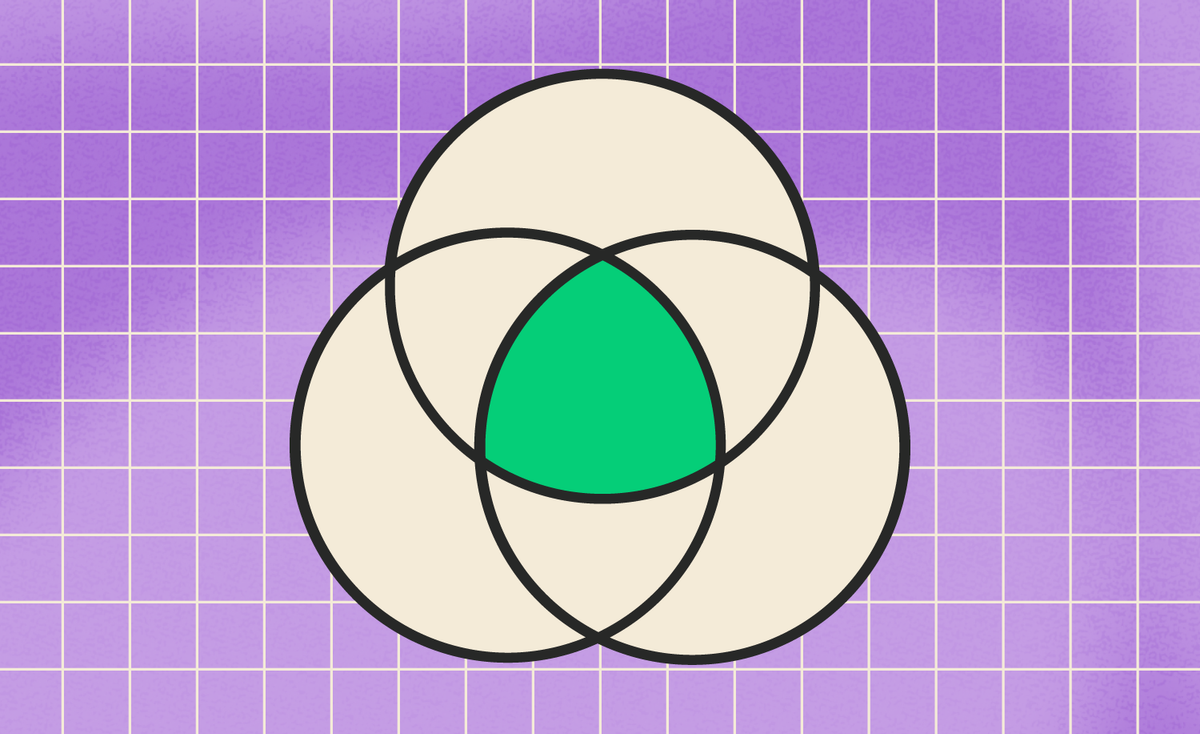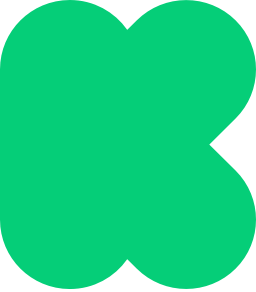What is Product-Market Fit: A Guide for Entrepreneurs
Dive into the essence of product-market fit and discover how it can be the key to your business's success.

Entrepreneurship is a matchmaking game. It's about using your capacity for innovation to solve a problem that needs a solution.
That match is called product-market fit. It's the foundation of every successful startup and small business, and it's out there somewhere for your product. It's just a matter of knowing where to look.
Product-Market Fit 101
Picture a venn diagram with three circles. One says, "What we do." One says "What the customer needs," and the last says "What others aren't doing."
That intersection in the middle is product-market fit. It's the sweet spot where your idea fills a gap in the market that no one else is serving. Product-market fit means having a product that meets a market need. When you find a gap in the market that no one else has filled and develop a product to fill it, you've achieved a solid product-market fit.
The Importance of Product-Market Fit for Creators
You may believe in your idea from day one but product-market fit is how you prove its potential to grow.
Business development relies on initial backers and enough customers to keep you growing. Market fit is how a new business proves its potential to attract the desired audience so new backers will have enough confidence to invest.
How To Identify Product-Market Fit
Product-market fit isn't a test you pass or fail. You achieve it by carefully considering your market, target audience, and business model. You learn what your target customers need, then develop your idea to meet that need.
Follow this product-market fit framework to get started.
Find Your Tribe
Think about your creative idea. Who would rush to back your Kickstarter because they need that exact product?
You start here because solutions always follow problems. Before you address a market need, you must pinpoint it and know why it exists. The "why" comes directly from the audience you serve. Every market need stems from the struggles of real people. When you identify those people and what your product can do for them, you can focus on refining that fit.
One exciting method to try is creating a persona—a character representation of your target market. Personas turn vague constructs into three-dimensional humans.
For example, your ideal customer is no longer "young women interested in skincare." It's Emily, a 25-year-old administrative assistant who lives with two roommates.
Understanding Backer Needs
Once you know your potential backers, your next step is determining their needs. For example, Emily has plenty of options for skincare organizers. She might like one that matches her room design, but she needs something compact.
Harvard Business School has identified three kinds of customer needs:
- Functional needs: The need for a product that helps with a particular task, such as organizing skincare or exercising a new puppy.
- Emotional needs: The need for a product to inspire a certain feeling, like the confidence that comes from looking great or the relief of not having chewed-up shoes.
- Social needs: The need to maintain or present a particular image related to using the product.
A great product-market fit comes from meeting as many backers' needs as possible. You want to focus on needs that existing products don't address.
As a creator, you focus on Emily's two pain points with other products. Remember, Emily represents a whole market segment of people.
What's your Value Proposition?
This step differentiates you from every other product in the market. You've learned what your customers need and why your product fills that gap. Now, you'll summarize the overall customer benefit and why it matters.
A value proposition is a statement of what your business does and why it's unique. The statement should be two to three sentences long and answer three key questions:
- What do you bring to the market?
- What do customers pay you to do?
- What separates you from competitors?
Your goal is to create a concise and value-packed elevator pitch that's convincing to backers and customers. Here's a fantastic example from Kickstarter Creator, ThinkThing Studio, creator of the MagDisk.

MagDisk is revolutionizing the data storage industry with its cutting-edge magnetic disk technology. Unlike traditional hard drives, MagDisk's solution offers significantly higher storage capacity, faster data transfer rates, and enhanced durability.
Notice the two parts of this stellar value proposition. First, it highlights the technology as the company's primary output. Then, it details the user benefits that set it apart.
Iterate and Improve
Iteration is a product management term that comes from the software industry. It breaks the development process into cycles, each geared toward a specific improvement.
Today, creators across industries use the iterative process to improve product-market fit. It allows a product team or individual to look at one feature or user experience aspect at a time, diving deeply to make it as strong as possible.
A formal literation process has five stages:
- Gathering requirements
- Designing the new or revised feature
- Making the plan a reality
- Testing the new feature
- Reviewing the results
Each iteration strengthens the product and aligns it with the target customer's needs. You and your team can run as many iterations as necessary to achieve this goal.
4 Key Indicators To Measure Product-Market Fit
As soon as you have a viable product on the market, start looking for indicators of product fit. These four metrics will get you started.
1. Customer Growth
A high growth rate means you're gaining customers faster than you're losing them. More people are trying your product for the first time, and those who do are staying.
If you want to grow your customer base, consider developing a growth hypothesis—an idea of how new customers will find your product. For example, how much of your early business will come from your Kickstarter campaign?
Early customer feedback is the best way to test your growth hypothesis. Use tools like Google Analytics to track new visitors and how they find you. Track how fast you're growing and how people get to you.
The pace of your customer growth directly indicates how well you fit the market. When you find that Eureka product idea—the one that meets a significant need and no one else is offering—the backers will come flooding in.
2. High customer engagement
Customer engagement is the active connection between your brand and its customers. Each interaction—from a purchase to a product mentioned on their Facebook page—is an example of engagement.
Other kinds of engagement include:
- Google or Yelp reviews
- Messages to customer support
- Questions on your project page
- Suggestions or requests on your social media
When engagement is high, you've found a market need to fill. Customers engage when they feel invested in a brand, and that investment comes from the brand doing something no one else does.
3. Net promoter score (NPS)
Net promoter score is a gold-standard marker for customer satisfaction. It measures how likely customers are to recommend your product to others.
A one-question survey is all it takes to measure your brand's NPS. Most brands use a 1-to-10 scale, with 9 and 10 raters being active promoters. This scale identifies how well your product fits the market based on who recommends you to others.
4. Low customer churn rate
Your churn rate is the number of customers who stop doing business with you over a set period, such as monthly or quarterly. If your product fits its market, fewer customers will churn.
To calculate your churn rate, subtract your customer count at the end of the period from how many you had at the beginning. Then, you divide the difference by the beginning count.
For example, if you had 1,000 customers at month's end and 1,100 at the beginning, your churn rate would be 9%:
(1,100 - 1,000)/1,100 = .09
Case Studies and Real-World Examples
Let's look at how product-market fit helped two Kickstarter creators get funding:
- Fidget Cube is a top-ranking Kickstarter project with close to 155,000 backers. This cube has qualities no other fidget "toy" does—it's subtle yet satisfying for all ages and not too childish for adults to keep on their desks. Fidget Cube welcomes its backer to "fidget at work, in class, and at home in style." That style generated this campaign more than $6 million in funding.
- Moft, the "invisible" laptop stand, has received over $1 million in funding. This stand fits a niche for laptop owners who appreciate the ability to work anywhere. Moft fits easily onto a laptop without adding bulk. Geared for business travelers and anyone else who needs a professional-looking laptop, it attracted more than 32,100 backers, generating $926,567 in pledges.
Start Your Journey Towards Market Fit
Kickstarter is where innovators like you find their market. Think of us as a hub for creative ideas —you bring your exciting new idea, and we put it out there for people to discover. If they like it, they can back it.
Meanwhile, you get real numbers to assess product fit. If you meet your project goal, you're on your way to meeting a real market need. If you don't quite get there or decide halfway there to change things up, you can always relaunch!
Kickstarter is behind you through it all, with resources from taxes on contributions to promoting your project. We're a community of creators who have been where you are—and backers who love to support new ideas.
Join our community today and START YOUR JOURNEY to the perfect product-market fit.
